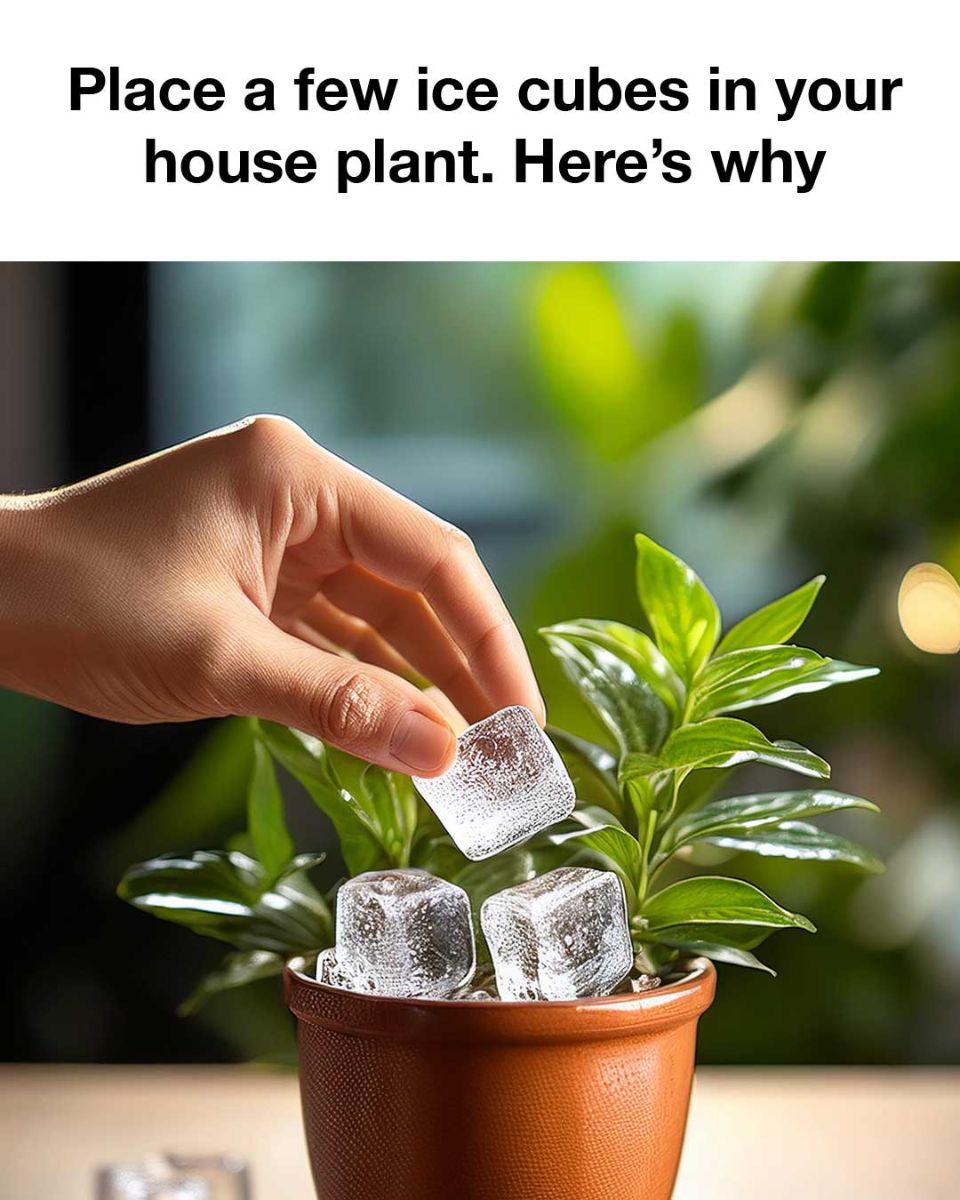preventing overwatering or waterlogging. This slow-release method is especially beneficial for plants that need a consistent moisture level. Additionally, placing ice cubes in the pot is a convenient way to water in small, measured amounts, which is ideal for people who tend to overwater.
The Science Behind Using Ice Cubes
The rationale behind using ice cubes lies in their slow melting process, which allows water to seep into the soil gradually. When the ice melts, the resulting water penetrates the soil at a controlled rate, ensuring that the plant roots absorb moisture steadily rather than experiencing a sudden influx. This method minimizes the risk of root rot and ensures even moisture distribution, promoting healthier plant growth.
Step-by-Step Guide to Using Ice Cubes for Plant Watering
continued on next page1. Assess Your Plant’s Water Needs: Research the specific watering requirements of your plant.
2. Choose the Right Size of Ice Cubes: Small to medium-sized ice cubes work best to avoid shocking the plant.
3. Place Ice Cubes on the Soil: Distribute a few ice cubes evenly on the surface of the soil, avoiding direct contact with the stem.
4. Monitor the Progress: Observe how quickly the ice cubes melt and adjust the number of cubes accordingly in the future.
5. Repeat as Needed: Depending on your plant’s needs, repeat the process once or twice a week.
Common Misconceptions
A common misconception is that placing ice cubes on the soil will freeze the roots, risking damage or even killing the plant. However, as long as the ice cubes are of reasonable size and not placed in contact with the stem, this method is safe. Another misconception is that ice water is too cold for plants. In reality, as the ice melts, it warms to room temperature, making it safe for the plant.
Potential Risks and Precautions
Though placing ice cubes is generally safe, certain precautions should be taken. Ensure that ice cubes do not come into direct contact with plant roots or the stem to prevent freeze damage. Use this method on plants in well-draining pots to avoid water accumulation at the base, which could lead to root rot. Some plants sensitive to cold may not benefit from this method, so it’s crucial to understand the specific needs of your plants.
Best Practices for Using Ice Cubes on Different Types of House Plants
For tropical plants, smaller ice cubes can help maintain the consistent moisture they need without exposing them to excessive cold. Succulents and cacti, which require less water, can benefit from an occasional ice cube to prevent overwatering. Orchids respond well to this method since they thrive on moisture retention and gradual absorption. However, it is advisable to use fewer ice cubes for plants that have minimal water needs.
Case Studies and Real-Life Experiences
A variety of plant enthusiasts have shared their success stories with this method. Take Sarah, for example, who found that her orchids flourished after she started using ice cubes for watering. Similarly, John, who frequently travels, discovered that placing ice cubes in his succulent pots once a week kept them healthy and hydrated with minimal effort. These real-life experiences demonstrate the practicality and effectiveness of this watering method.
ADVERTISEMENT
